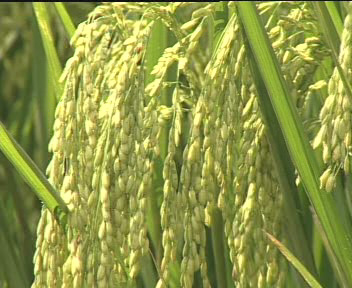张联合课题组在水稻中鉴定一个具有很强转运亚硒酸盐特性磷转
河南科技大学张联合课题组和中科院遗传与发育生物学研究所储成才课题组合作,通过遗传、分子、生理等手段发现,水稻中的亚硒酸盐是通过磷转运子吸收,并鉴定了一个具有很强转运亚硒酸盐特性的磷转运子。相关文章发表于2013年11月11日的《New Phytologist》杂志上。

张联合课题组在水稻中鉴定一个具有很强转运亚硒酸盐特性磷转运子
硒是人和动物必需的微量元素之一,具有抗氧化、提高免疫力和预防癌症等多种重要的生理功能。人体硒主要从植物性食物尤其谷物中摄取,然而人们每天从饮食中获取的硒大大低于国际推荐摄硒量标准。
目前,植物富硒产品的生产主要依靠叶面喷硒来实现,但叶面喷硒既提高了生产成本,又存在潜在的环境风险,且受降雨、大风等外界环境因素的影响,很难获得硒含量稳定的产品。水稻是我国主要的粮食作物,通过提高稻米硒含量是提高人体摄硒量的有效途径。
利用遗传改良提高水稻根系吸收硒能力,进而提高大米硒含量是一条理想的途径。在土壤中,硒酸盐和亚硒酸盐是植物主要的有效硒形式。在透气良好、碱性土壤中,硒酸盐是主要存在形式;而在土质粘重、透气性差、酸性土壤尤其水稻田中,亚硒酸盐是主要形式。研究表明,植物通过硫转运子吸收硒酸盐,然而植物吸收亚硒酸盐的机制并不清楚。由于缺少证据,长期以来人们一直认为植物通过被动方式吸收亚硒酸盐,因此,很难通过生物技术改良手段提高大米硒含量。
河南科技大学张联合课题组和中科院遗传与发育生物学研究所储成才课题组通过遗传、分子、生理等手段发现,在水稻中,亚硒酸盐是通过磷转运子吸收的,并鉴定了一个具有很强转运亚硒酸盐特性的磷转运子,将编码该转运子的基因在水稻中过量表达可显著提高大米硒含量,该项研究成果不仅极大地丰富和完善了植物吸收亚硒酸盐的理论,也为富硒大米乃至富硒产品的生产提供了一条极为有效的途径。
张联合副教授和胡斌博士为论文的共同第一作者。
作者简介
张联合,男,汉族。1970年2月出生于河南省扶沟县。1989年9月-1992年6月,在洛阳农专农学系学习; 1992年8月-1999年9月,在河南省扶沟县鸿昌职业高中任教;1999年9月-2002年6月,在河南农业大学攻读硕士;2002年9月-2005年7月,在中科院南京土壤所攻读博士,于2005年7月获得博士学位; 2005年7月至今在河南科技大学工作,副教授、硕士生导师。研究方向为植物营养生理。在水稻吸收亚硒酸盐生理机制方面有自己的研究特色,提出了不同形式亚硒酸盐能够通过不同方式进入水稻根内的观点。
原文摘要:
OsPT2, a phosphate transporter, is involved in the active uptake of selenite in rice
Lianhe Zhang, Bin Hu,Wei Li, Ronghui Che, Kun Deng, Hua Li, Feiyan Yu,Hongqing Ling, Youjun Li, Chengcai Chu
Selenite is a predominant form of selenium (Se) available to plants, especially in anaerobic soils, but the molecular mechanism of selenite uptake by plants is not well understood.
ltn1, a rice mutant previously shown to have increased phosphate (Pi) uptake, was found to exhibit higher selenite uptake than the wild-type in both concentration- and time-dependent selenite uptake assays. Respiratory inhibitors significantly inhibited selenite uptake in the wildtype and the ltn1 mutant, indicating that selenite uptake was coupled with H+ and energy-dependent. Selenite uptake was greatly enhanced under Pi-starvation conditions, suggesting that Pi transporters are involved in selenite uptake.
OsPT2, the most abundantly expressed Pi transporter in the roots, is also significantly up-regulated in ltn1 and dramatically induced by Pi starvation.OsPT2-overexpressing and knockdown plants displayed significantly increased and decreased rates of selenite uptake, respectively, suggesting that OsPT2plays a crucial role in selenite uptake. Se content in rice grains also increased significantly in OsPT2-overexpressing plants.
These data strongly demonstrate that selenite and Pi share similar uptake mechanisms and that OsPT2 is involved in selenite uptake, which provides a potential strategy for breeding Se-enriched rice varieties.

